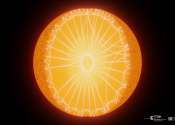Tiniest 'starquakes' ever detected
At a distance of 11.9 light years, Epsilon Indi (ε Indi) is an orange dwarf star (also known as a K dwarf) with 71% of the sun's diameter. An international team, led by Instituto de Astrofísica e Ciências do Espaço (IA) ...









